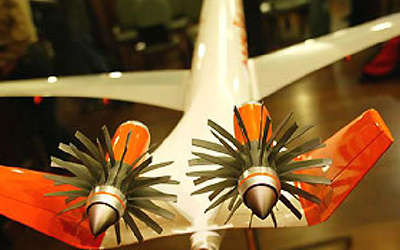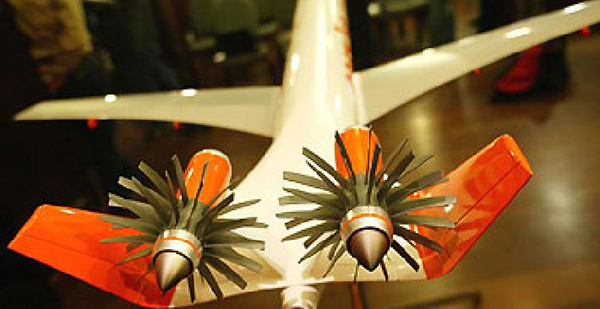Low impact design that’s got to (be) smart


Back to Propellors: The larger, slower moving un-ducted fans on these engines are said to produce a sound that is both quieter and sweeter to the ear. photographer Frank Baron
In a perfect world, economic drivers would be indistinguishable from environmental drivers.
Readers of Mahurangi Magazine will no doubt range from climate change sceptics, all the way through to those in the ‘chances are we’re already dog tucker’ camp. But regardless of where we stand regarding the need for urgent action on climate, the general assumption has been that continuing to rape the planet was better for the country’s short-term economy than was, for example, signing the Kyoto Protocol.
Business is adroit at making the buck that is available, in order to live to fight another day. The trick is to ensure that business is rewarded promptly for doing the sustainable thing.
Mostly, if we are talking about retail in particular, consumers reward the businesses that market the cheapest product. And nowhere is that more pronounced than when it comes to filling up. I have yet to hear anybody say ‘I always go to (oil company), I know they charge a little more, but hey look what they do for the environment!’
If consumers strongly rewarded businesses for wholesome practices, and penalised the unwholesome, this would be market forces in a form that we could all respect.
On Friday, Avaaz, an independent global campaigning organisation, called for a boycott of Total Oil and Chevron–Texaco:
Total has become the main supporter of the Burmese military regime.
If Avaaz, through its rapidly growing global community, is able to deliver a short sharp economic message that smarts, this surely would be market forces at their best.
The Avaaz action is necessary, and personally very welcome—having made friends with a couple of Burmese exchange students in my youth, I have a long-felt frustration of having no way to help.
However, I had hoped that the organisation’s first direct action in the business world would be quite different—that it organised to richly reward a company for doing the better thing. The particular opportunity that I thought Avaaz might have considered was easyJet’s June 2007 launch of the ecoJet concept.
Being one of Europe’s largest low-fare airlines, and given our addiction to air travel, even New Zealanders could have plonked money into the pocket of easyJet. (And there’s the strong Aotearoa connection; native son and recently retired long-serving chief executive, Ray Webster, earlier was Air New Zealand’s great loss.)
While we await a wholly positive Avaaz campaign—one that has Wall Street gasping in awe, and the world gasping in wonder—we can do something locally:
If a developer, doing the same old, same old, can readily quit every section created, there is no financial incentive for embracing something better: low impact design. If by working in partnership with the community and its councils, a developer can come up with a design that is good for the harbour, good for its inhabitants young and old, rich and poor, while preserving the natural look of the landscape…
Now this is not going to be easy, at least not initially. The first low impact design subdivisions in Rodney are bound to be a struggle—low impact designers will be learning as they go, resource consents will be breaking new ground, neighbouring property holders will be suspicious. But once there are some well-executed examples, low impact design deserves to become the straightforward and profitable way for developers to go: the smart option!
Footnote Chevron markets its products in Aotearoa under the Caltex brand.
